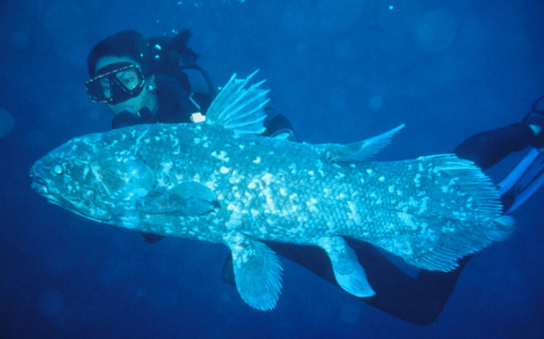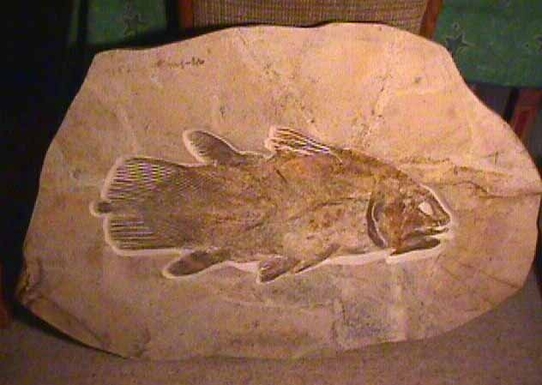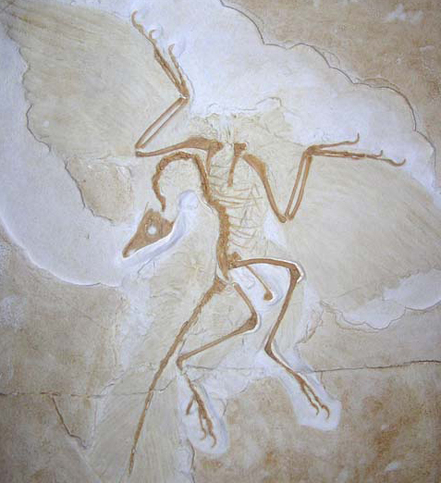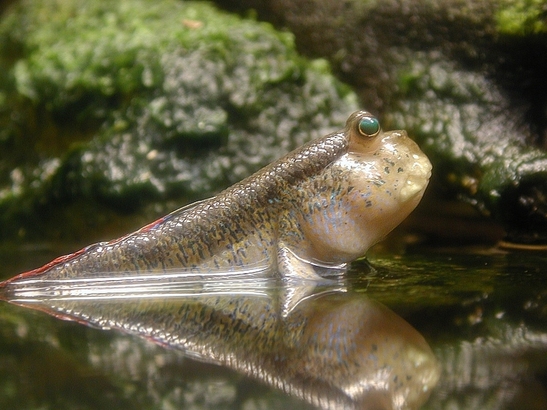 |
 |
 |
 |
 |
 |
 |
 |
|
 |
 |
 |
19 Missing Links
|
| Menu | back |
The required transitions from fish to amphibians, from amphibians to reptiles and from reptiles to birds, have, even after 150 years of research among the fossils, not been found. Comparisons between the "most amphibian like fish" (coelacanth/periophthalmus) and the "most fish-like reptiles" (ichthyostega) demonstrate, moreover, that with complex key attributes such as the construction of the tetrapod extremities (legs of the four-footed land creature) or the construction of the skull, evolutionary intermediate forms are hardly conceivable. For the transition between reptiles and birds, the idea that archaeopteryx was a transitional form is stubbornly held, even though it has been proved that it was one hundred percent a bird, feathered, warm blooded and equipped with the special bird lung.
Between the different orders, families, and classes of creature known to us and passed down in fossils, there is not a single undisputed transitional form. Between all these classes and their many orders, one would, in accordance with the theory of evolution, expect countless transitional forms, combining the many key traits of two species. Several examples have, in the past, been suggested as transitional forms; however, after extensive examination, all were rejected (1) (2) (3).
The coelacanth (crossopterygian):
|
 |
|
The coelacanth is supposed to be one of these transitional forms between fish and amphibians. This fish has fins with enhanced muscle attachments so that one assumed that it would walk on the seafloor with its fins. These creatures were observed day and night and, as a result, the conclusion was reached that it uses its enhanced muscle attachments to stand upright in the water and to swim upright with its head upwards and its chest forwards. Practically no textbook mentions anything about this.
|
| |
|
|
 |
|
If one observes the coelacanth (for instance, latimeria, a living fossil) it becomes clear that it is undoubtedly a fish. Added to that is the fact that, at one metre long, it is a relatively large fish. The assumption that this large fish should be a transitional form between fish and amphibian is not at all credible. Furthermore, it lives at great ocean depths and there is no trace of even the beginnings of lungs.
|
Archaeopteryx:
|
 |
|
Since the discovery of archaeopteryx in the 1860s, the phylogenetic origins of the bird have been discussed controversially (4). The central question often concerned its ability to fly, especially with respect to its suspected descent from a dinosaur that walked on two legs (theropods, for example, compsognathus; according to later opinion, thecodonts) (5).
Based on the earlier anatomical-morphological studies carried out as early as in the nineteenth century by the biologist Thomas Huxley, this idea has been taken up repeatedly by taxonomists and palaeontologists up until the most recent times. A good flying ability, resulting from therapod descension, is doubted (6).
Its true that even the palaeornithologist Alan Feduccia does not fundamentally rule out the descent of birds from the dinosaurs of the tree dwelling/living kind, capable of flying or at least gliding (7). However, contradictory discoveries, for instance concerning the identity of morphological structures (bird hand bones), complicate the interpretation of phylogenetic connections. With the assistance of familiar fossil evidence, far and wide no dinosaur forerunner is in sight, which could be deemed to be the progenitor of all birds.
|
The fact that this one disputed form is, time and again, cited as an example of transitional forms illustrates how poorly stocked the number of known transitional forms is. Nevertheless, one must be aware that the development of wings capable of supporting flight poses a very special problem for the idea of evolution proceeding over many generations: feathered wings, a birds heart and a birds lungs offer the creature a survival advantage only if they are complete and fully functional.
The snake:
The snakes family tree can only be recognised in fossils in a very fragmentary way, if at all. Among experts, the evolution of todays snake is a phenomenon which can only be explained by much speculation (8).
The mudskipper (periophthalmus):
|
 |
|
At the first glance, one could take the mudskipper for a transitional form between fish and amphibian, yet well-known evolutionary researchers seldom believe that. In spite of its amphibian way of life, fins and breathing gills show that it is a fish. With mudskippers, the gill cavity is only connected to the outside world by a narrow gill slit, which prevents the delicate breathing organ from drying out. By snatching air it can, within limits, refresh the oxygen content of the seawater it holds in its enlarged jaw cavity (9).
|
These 20 | Menu |
back
|
References:
|
| (1) |
Helmut Schneider, Natura, Biologie für Gymnasien, Band 2, Lehrerband, Part B, 7. to 10. Schuljahr, Ernst Klett Verlag, 2006, page 257. |
| (2) |
Horst Bayrhuber & Ulrich Kull, Linder Biologie, Textbbok for senior classes, 21. (Schroedel Verlag GmbH, Hannover, 1998) pages 418, 430, 432. |
| (3) |
Ulrich Weber, Biologie Oberstufe, Gesamtband, Cornelsen Verlag, 2001, pages 294295. |
| (4) |
Helmut Schneider, Natura, Biologie für Gymnasien, Band 2, Lehrerband, Part B, 7. to 10. Schuljahr, Ernst Klett Verlag, 2006, page 261. |
| (5) |
G. Heilmann, The origin of birds, London, Witherby, 1926. |
| (6) |
R.T. Bakker, Dinosaur renaissance, Scientific American, 232, 1975, pages 5878. |
| (7) |
Alan Feduccia, The problem of birds origin and avian evolution, Journal Ornithology, 142, Sonderheft 11391147, (Studium Integrale, Mai 2002), pages 3740. |
| (8) |
Colbert et al., Evolution of the vertebrates: A history of the backboned animals through time, 5th edition. (New York: Wiley-Liss, 2001) |
| (9) |
P.K.L. Ng und N. Sivasothi, A Guide to the Mangroves of Singapore 1 (Singapore Science Centre, 1999) pages 138139. | |
| |
(Image "Coelacanth") http://www.mnh.si.edu/highlight/coelacanth/images/image_2_lg.jpg
(Image "Archaeopteryx Fossil") http://trilobita.de/gallery/others/archaeopteryx1/archaeopteryx.htm
(Image "Mudskipper") http://de.wikipedia.org/wiki/Bild:Schlammspringer_fg01.jpg
|
| |
Comment this Site!
|
 |
 |
 |
 |
|

